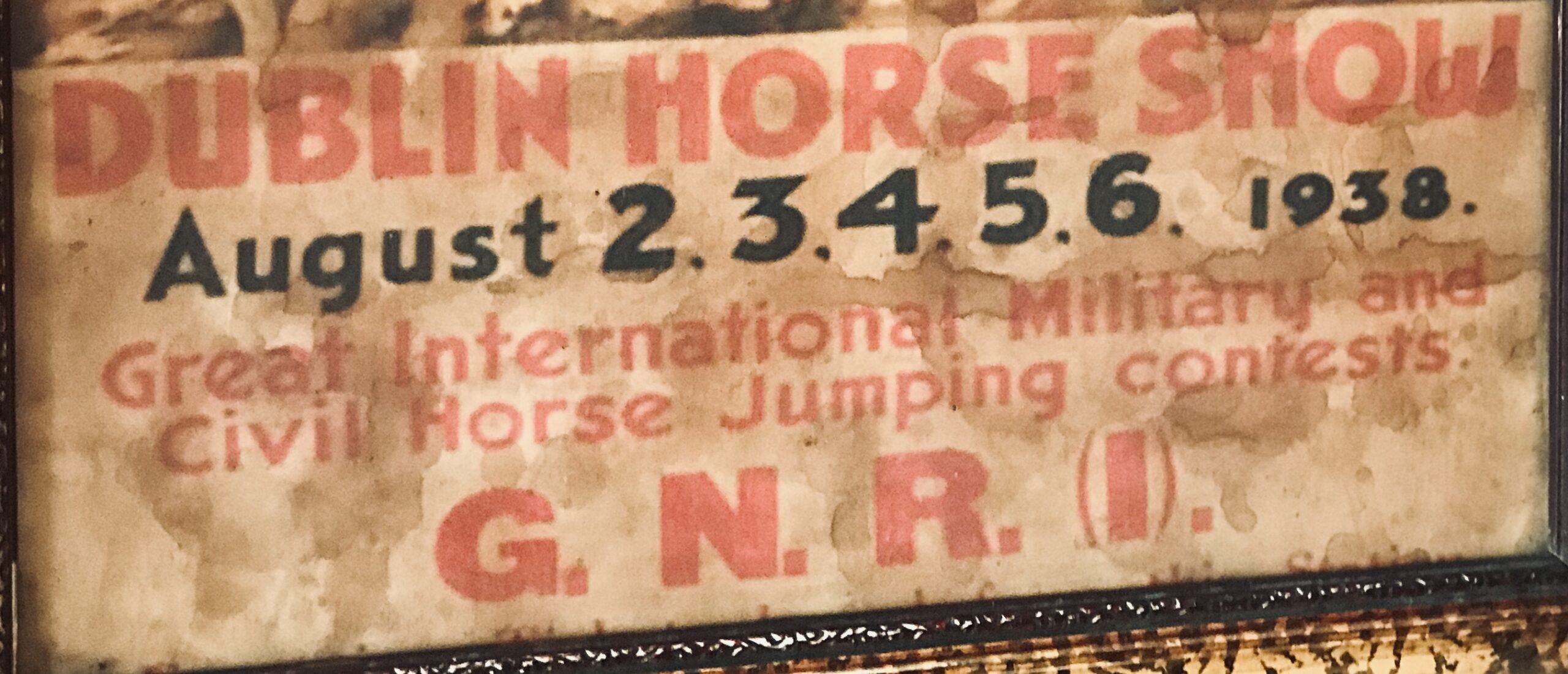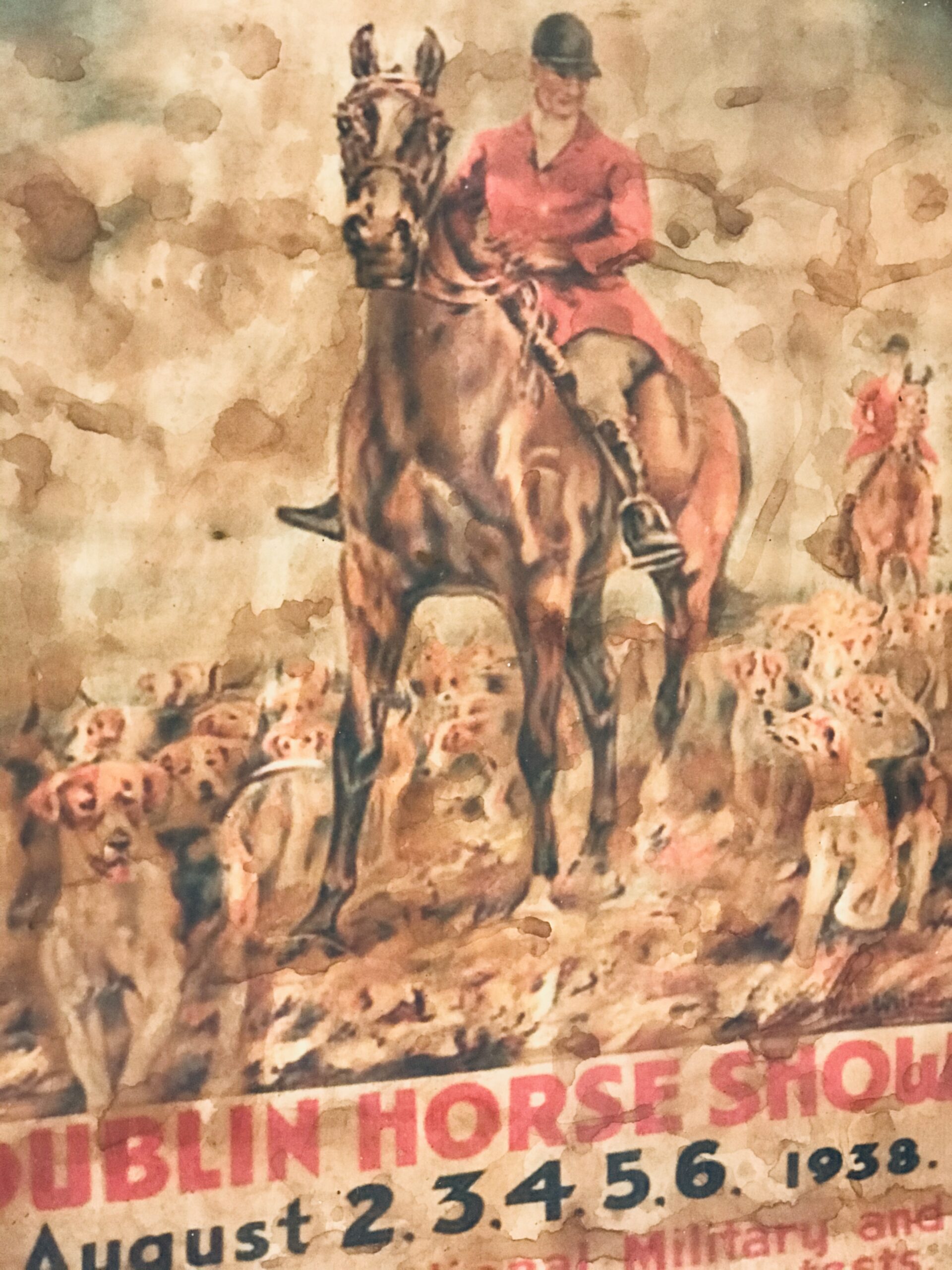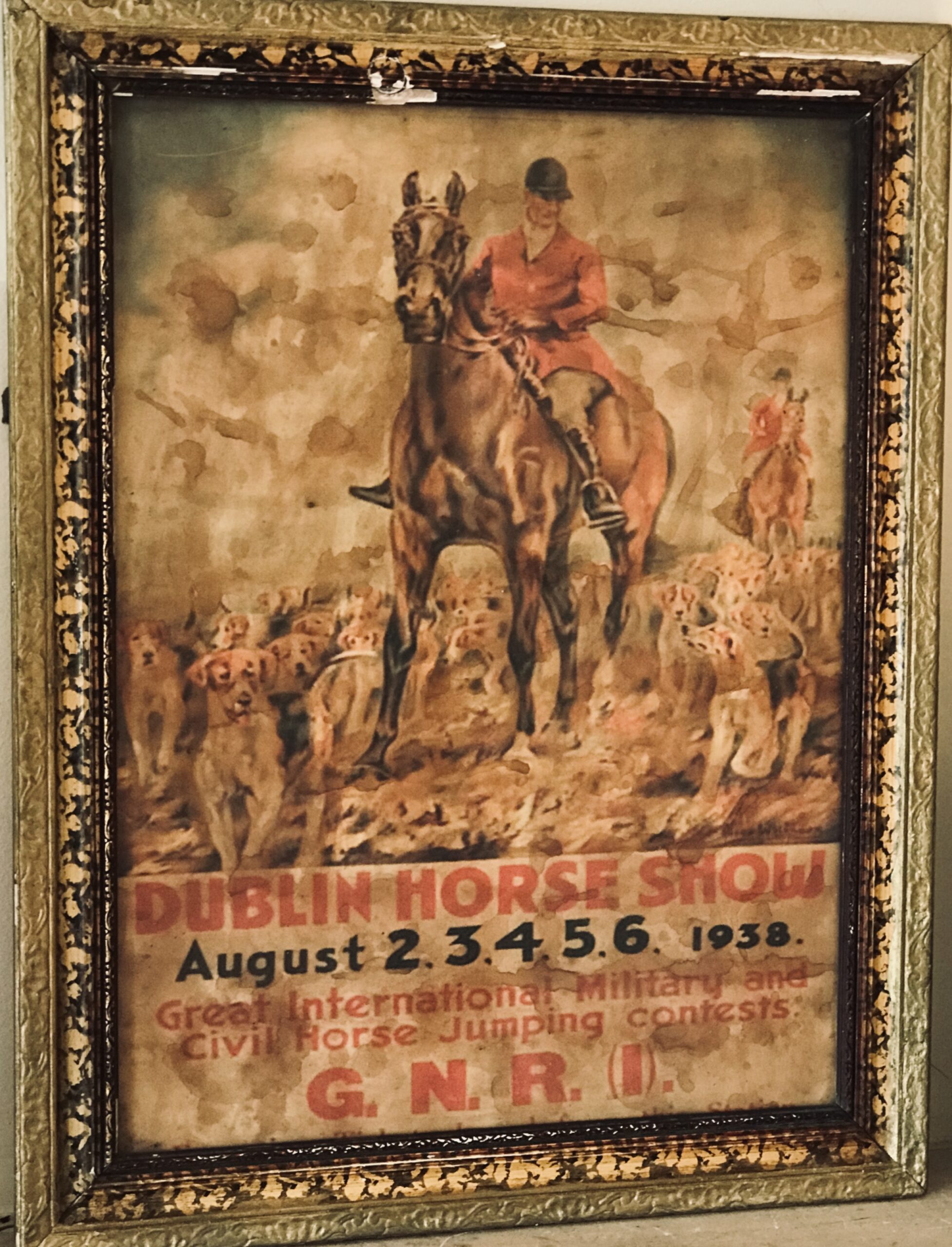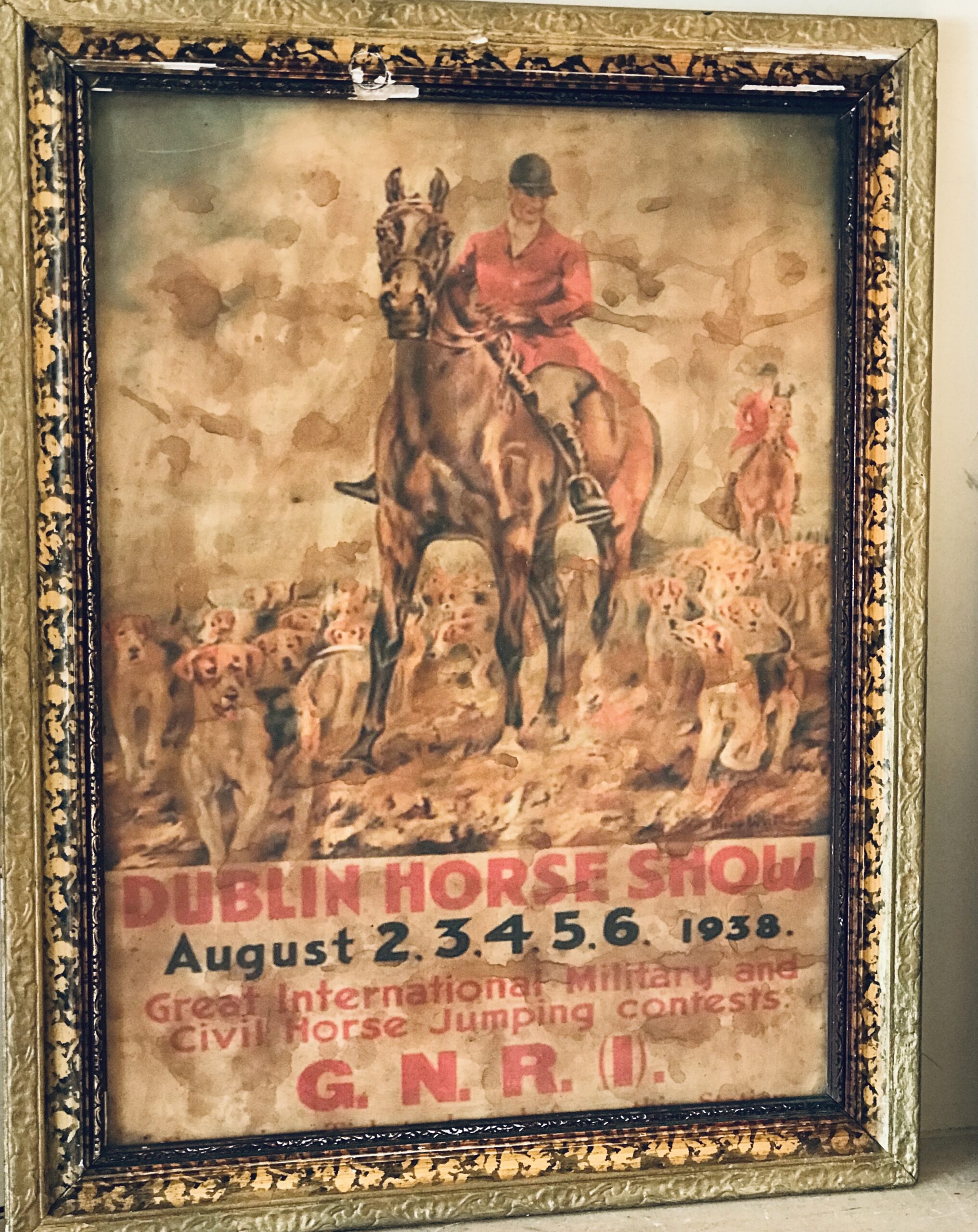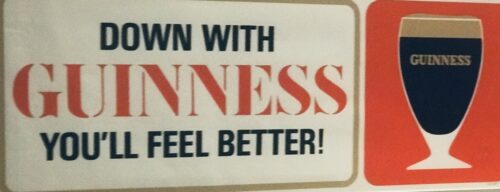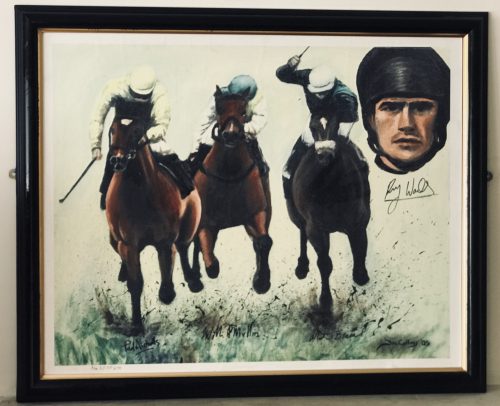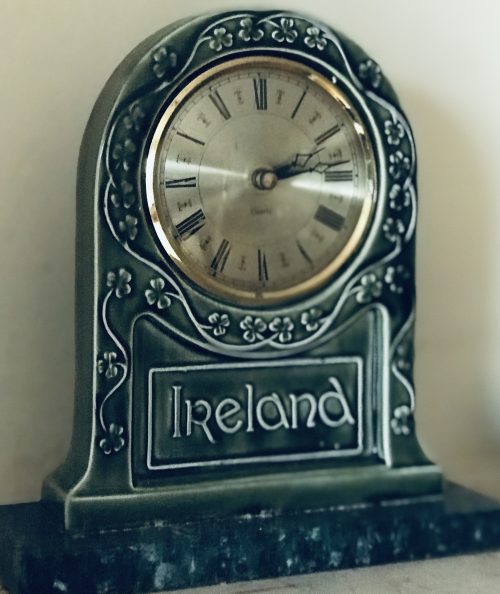60cm x 45cm Naas Co Kildare
RDS (Royal Dublin Society) Dublin Horse Show advertising print from 1938 featuring a beautiful image of a huntsman on horseback with working hounds . The advert was printed by Alex Thom & Co Ltd Dublin and also describes the various modes of transport available to prospective horseshow goers, namely the GNR or Great Northern Railway.The event ,similar to current day took place from August 2nd to August 5th.
Founded in 1876,the GNR was a merger between the Irish North Western Railway,Northern Railway of Ireland and Ulster Railway.The company was nationalised later in 1953 before being finally liquidated 5 years later with its assets divided upon national lines between the Ulster Transport Authority & Ćoras Iompair Éireann (CIE).
The first Dublin Horse Show took place in 1864 and was operated in conjunction with the Royal Agricultural Society of Ireland. The first solely Society-run Horse Show was held in 1868 and was one of the earliest “leaping” competitions ever held.Over time it has become a high-profile International show jumping competition, national showing competition and major entertainment event in Ireland. In 1982 the RDS hosted the Show Jumping World Championshipsand incorporated it into the Dublin Horse Show of that year. The Dublin Horse Show has an array of national & international show jumping competitions and world class equestrian entertainment, great shopping, delicious food, music & fantastic daily entertainment. There are over 130 classes at the Show and they can be generally categorised into the following types of equestrian competitions: showing classes, performance classes and showjumping classes.
- The first show was held in 1864 under the auspices of the Society, but organised by the Royal Agricultural Society of Ireland.
- There were 366 entries in the first Show with a total prize fund of £520.
- On the 28, 29 and 30 July 1868 the first show was held and organised by the Royal Dublin Society on the lawns of Leinster House. The Council granted £100 out of the Society’s funds to be awarded in prizes. It started as a show of led-horses and featured ‘leaping’ demonstrations.
- The first prize for the Stone Wall competition (6ft) in 1868 was won by Richard Flynn on hunter, Shane Rhue (who sold for £1,000 later that day).
- Ass and mule classes were listed at the first show!
- In 1869 the first Challenge Cup was presented for the best exhibit in the classes for hunters and young horses likely to make hunters.
- In 1870 the Show was named ‘The National Horse Show’, taking place on the 16-19 August. It was combined with the Annual Sheep Show organised by the Society.
- 1869 was the year ‘horse leaping’ came to prominence. There was the high leap over hurdles trimmed with gorse; the wall jump over a loose stone wall of progressive height not exceeding 6 feet; and the wide leap over 2 ½ ft gorse-filled hurdle with 12 ft of water on the far side.
- The original rules for the leaping competitions were simply ‘the obstacles had to be cleared to the satisfaction of the judges’.
- The prizes for the high and wide leaps were £5 for first and £2 for second with £10 and a cup to the winner of the championship and a riding crop and a fiver to the runner up.
- In 1881 the Show moved to ‘Ball’s Bridge’, a greenfield site. The first continuous ‘leaping’ course was introduced at the Show.
- In 1881 the first viewing stand was erected on the site of the present Grand Stand. It held 800 people.
- With over 800 entries in the Show in 1895, it was necessary to run the jumping competitors off in pairs – causing difficulties for the judges at the time!
- Women first took part in jumping competitions from 1919.
- A class for women was introduced that year on the second day of the Show (Wednesday was the second day of the Show in 1919. Ladies’ Day moved to Thursday, the second day, when the Show went from six to five days). Quickly after that, from the 1920s onwards, women were able to compete freely in many competitions at the Show.
- Women competed in international competitions representing their country shortly after WWII.
- As the first “Ladies’ Jumping Competition” was held on the second day of the Show this day become known as Ladies’ Day. A name that has stuck ever since.
- In 1925 Colonel Zeigler of the Swiss Army first suggested holding an international jumping event. The Aga Khan of the time heard of this proposal and offered a challenge trophy to the winner of the competition.
- In 1926 International Competitions were introduced to the show and was the first time the Nations’ Cup for the Aga Khan Challenge trophy was held.
- Six countries competed in the first international teams competition for the Aga Khan Challenge trophy – Great Britain, Holland, Belgium, France, Switzerland and Ireland. The Swiss team won the title on Irish bred horses.
- The Swiss team won out the original trophy in 1930. Ireland won the first replacement in 1937 and another in 1979, Britain in 1953 and 1975. The present trophy is the sixth in the series and was presented by His Highness the Aga Khan in 1980.
- Up until 1949 the Nations’ Cup teams had to consist of military officers.
- The first Grand Prix (Irish Trophy) held in 1934 was won by Comdt.J.D.(Jed) O’Dwyer, of the Army Equitation school. The Irish Trophy becomes the possession of the rider if it is won three times in succession or four times in all.
- The first timed jumping competition was held in 1938. In 1951 an electric clock was installed and the time factor entered most competitions.
- In 1976, after 50 years of international competition, the two grass banks in the Arena were removed so the Arena could be used for other events. The continental band at the western end of the Main Arena was added later.
- Shows have been held annually except from 1914-1919 due to WW1 and from 1940-1946 due to WW2.
- In 2003 the Nations Cup Competition for the Aga Khan Trophy became part of the Samsung Super League under the auspices of the Federation Equestre Internationale.
- The Nations Cup Competition for the Aga Khan Trophy is part of the Longines FEI Jumping Nations Cup™ Series.
- The Dublin Horse Show is Ireland’s largest equestrian event, and one of the largest events held on the island.
- The Show has one of the largest annual prize pools for international show jumping in the world.


